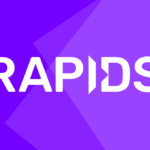In the world of data science, dataframes are indispensable. Whether you’re slicing and dicing large datasets or performing complex analytical operations, dataframes are your go-to structures.
Listen to the audio version, crafted with Gemini 2.0.
While Pandas reigns as the most popular dataframe library in Python, a growing number of alternatives like Polars, QDF, Modin, and others offer distinct advantages—be it GPU acceleration, parallelism, or lazy execution.
But this diversity comes with a challenge: How do you write libraries or applications that work seamlessly with multiple dataframe libraries? Enter Narwhals, a compatibility layer that bridges these APIs, enabling developers to write agnostic code across various dataframe libraries.
In this article, we’ll explore how Narwhals works, its benefits, and why it’s a game-changer for tool builders and data science workflows.
The Problem with Multiple Dataframe Libraries
Dataframe libraries are similar in concept but differ greatly in implementation. For example:
- Pandas: Eager execution, C extensions, widely used for general-purpose dataframe manipulation.
- Polars: Rust-based, strict typing, supports lazy execution for query optimization.
- QDF: GPU-accelerated, optimized for massive data operations.
- Modin: Parallelized Pandas-like library, scaling across cores or clusters.
While these options expand the possibilities for developers, they also create a fractured ecosystem. Consider these scenarios:
- Tool Compatibility: You’re building a library that needs to support both Pandas and Polars. Adapting to their different APIs and behaviors (e.g., eager vs. lazy execution) requires significant effort.
- Future-Proofing: You start a project in Pandas but want the flexibility to migrate to Polars or QDF later. How do you avoid locking yourself into one library?
Narwhals solves these problems by offering a unified API that abstracts away the differences, letting you focus on functionality rather than compatibility.
What Is Narwhals?
Narwhals is an open-source Python library designed to provide a dataframe compatibility layer. It acts as a wrapper around popular dataframe libraries, exposing a consistent API inspired by Polars.
Key features include:
- No Dependencies: Narwhals doesn’t impose additional dependencies, minimizing potential conflicts.
- Lazy and Eager Execution: Supports both paradigms, preserving the behavior of the underlying library.
- Typing Support: Static typing ensures IDEs can help you write and maintain code efficiently.
- Version Stability: APIs are versioned, ensuring backward compatibility even as the library evolves.
Who Is Narwhals For?
Narwhals is not meant for direct use by data scientists or analysts. Instead, it’s targeted at tool builders:
- Library Developers: Build libraries that can consume any supported dataframe format (Pandas, Polars, etc.) with minimal effort.
- Teams Using Mixed Libraries: Enable collaboration between teams using different dataframe tools.
- Deployments in Constrained Environments: Reduce dependencies and avoid library-specific overhead in production.
How Does Narwhals Work?
Narwhals provides a simple API that transforms your dataframe into a generic representation. You perform operations on this representation, and Narwhals ensures the appropriate methods are called on the native dataframe, preserving the library’s features.
Here’s an example of a dataframe-agnostic function:
from narwhals import nowalify
@nowalify
def calculate_statistics(df):
return df.select(
df.col("value").mean().alias("mean"),
df.col("value").std().alias("std_dev"),
)- Input: A dataframe from any supported library (e.g., Pandas, Polars, QDF).
- Output: Results in the same format as the input library.
Supported Libraries and Levels of Integration
Narwhals supports multiple dataframe libraries at different levels:
- Full API Support: Polars, Pandas, QDF.
- Interchange Protocol: Libraries like Modin or custom frameworks can implement a minimal interface to work with Narwhals.
Why Polars as the Base API?
Narwhals adopts Polars’ API due to its modern design and strict typing. Unlike Pandas, Polars enforces better practices and supports lazy execution, making it ideal for large-scale data processing. Additionally, translating Polars-style operations to Pandas or QDF is simpler than the reverse.
Real-World Use Cases
- Altair Integration: Narwhals allows Altair, a popular data visualization library, to support multiple dataframe backends seamlessly.
- Library Development: A library like
scikit-learncan use Narwhals to handle dataframes from various sources without locking into a specific API. - Hybrid Workflows: Teams using both Polars and Pandas can build common utilities with Narwhals, reducing duplication and increasing interoperability.
Getting Started with Narwhals
Installation: Install Narwhals via pip:
pip install narwhalsWrite Dataframe-Agnostic Code:
import narwhals as nw
@nw.nowalify
def example_function(df):
return df.select(df.col("a").sum())Supported Libraries: Use your function with any supported dataframe library:
import pandas as pd
import polars as pl
df_pandas = pd.DataFrame({"a": [1, 2, 3]})
df_polars = pl.DataFrame({"a": [1, 2, 3]})
print(example_function(df_pandas))
print(example_function(df_polars))Looking Ahead: The Roadmap for Narwhals
The Narwhals team is actively working on:
- Extending Support: Adding integrations for libraries like DuckDB and PyArrow.
- Community Contributions: Encouraging open-source collaboration for additional features and backends.
- Advanced Optimizations: Reducing overhead and improving compatibility for complex use cases.
Conclusion
Narwhals provides a crucial abstraction for the Python data science ecosystem, enabling developers to write consistent, flexible, and future-proof code. Whether you’re building libraries or large-scale data applications, Narwhals bridges the gap between popular dataframe tools, empowering you to focus on solving problems rather than compatibility issues.
To get started, check out the Narwhals documentation or join the community!





Leave a Reply